Parvovirus, or canine parvovirus (CPV) is an extremely contagious disease that can have long-term consequences for dogs. A dog can get this virus by sniffing the excrement of an infected dog, or by indirect contact, that is, when the virus reaches the dog through clothes or shoes, or human skin.
Parvo is particularly dangerous for young puppies, aged 6 weeks to several months, who have not been vaccinated against this virus. Parvo virus can seriously damage the dog’s bone marrow and even its heart.
This virus is extremely resistant to most disinfectants and can survive in the outdoor environment for up to 5 months.
Treatment of this virus is most successful, of course, when the virus is detected in time. Every dog owner will definitely want to contact a veterinarian as soon as he notices any symptom of the disease.
But, does parvo virus require an immediate visit to the vet? Is it possible and how to cure parvo without a vet?
You have come to the right place to find your answers. In the rest of the text, we will explain in detail the symptoms and dangers of parvovirus, as well as the treatment options for this disease.
How To Cure Parvo Without A Vet?
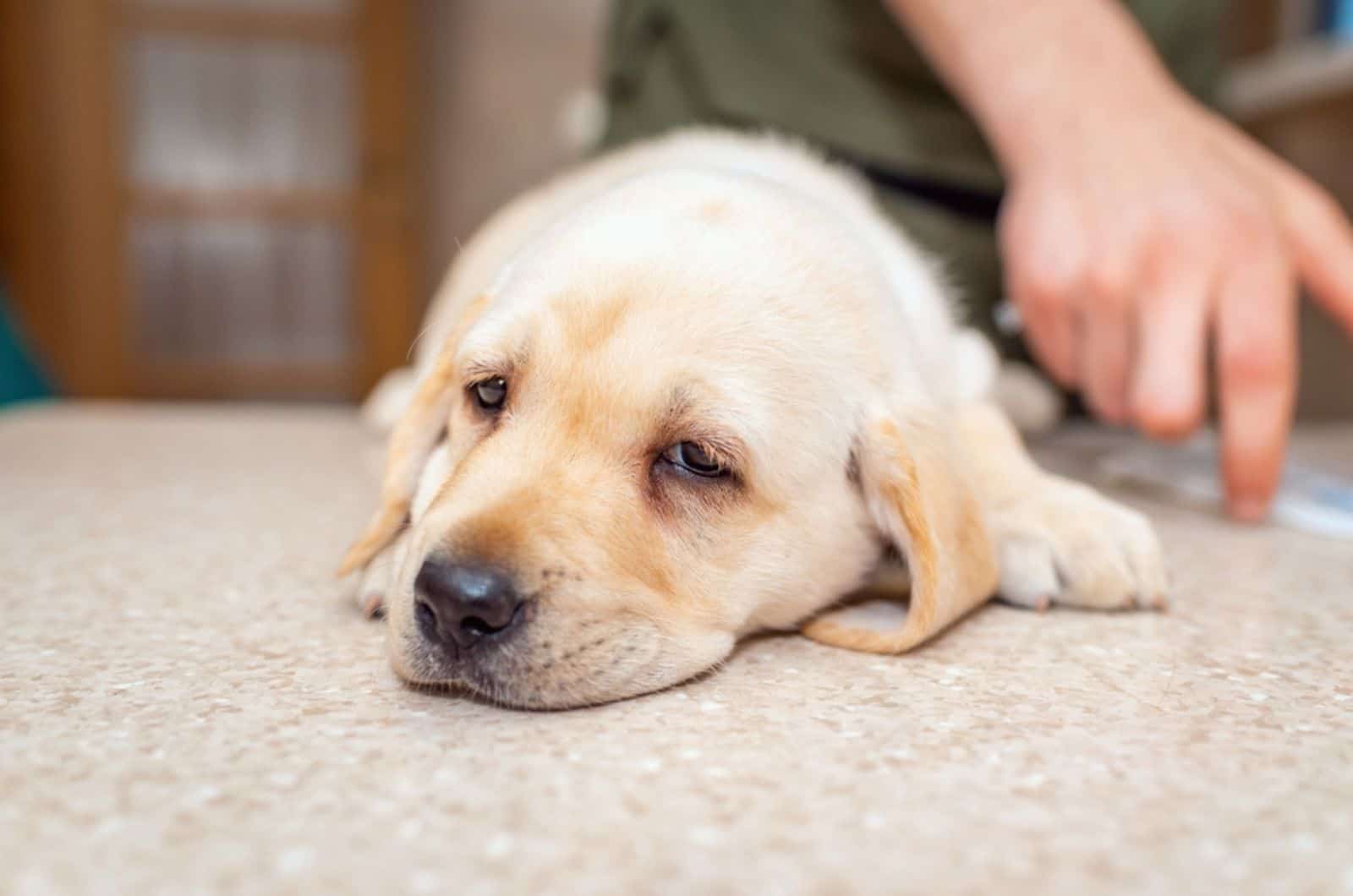
Canine parvovirus can be cardiovascular, which is rare, and gastrointestinal, which is very common, and which attacks the dog’s intestinal cells and prevents them from absorbing nutrients and fluids normally.
Since the symptoms of parvo virus (which we will discuss in detail below) can have similarities with other health conditions in dogs, it is first necessary to rule out possible poisoning, parasitic infestations, or kidney problems in a dog.
Recovery from parvo virus will significantly depend on the dog’s age, vaccinations, and the dog’s general health.
The basic therapy for this virus is fluid and electrolyte replacement, and if the diagnosis is made in time, and if the dog responds to therapy in the first few days, the prognosis for recovery is good.
Although such a contagious disease may sound scary to all dog owners, the good news is that there are ways to cure parvo virus even without the help of a veterinarian. Of course, proper education and care of the dog is needed for a sick dog to recover as soon as possible.
Of course, this does not mean that you should not contact a veterinarian at all – it is essential to immediately consult a veterinarian about the best way to care for your dog.
The basic care of a dog with parvovirus at home refers to hydration, an appropriate diet, and certain medications that will help the dog to recover.
But before we explain in detail how to treat parvo virus without a veterinarian, you first need to gain an insight into the general symptoms and diagnosis of this contagious virus.
How Can I Tell If My Dog Has Parvo?
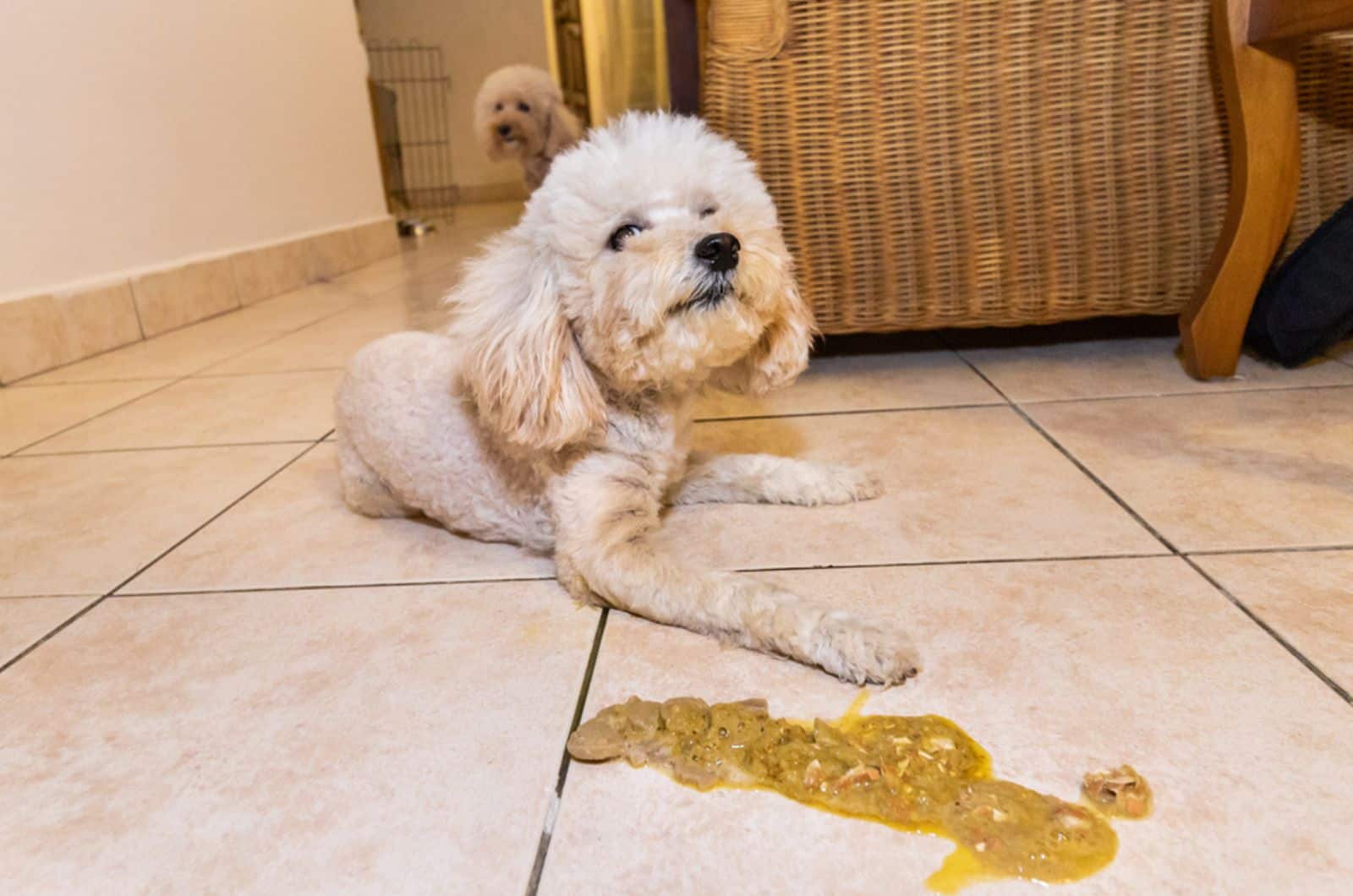
Each of our dogs will probably struggle with a certain health problem in their lifetime, and this is something we have to deal with. Although there are some conditions we cannot control, the best way to help our pets recover is to educate ourselves on common health problems in dogs.
Canine parvovirus might be dangerous, and even life-threatening for dogs, if it is not detected on time. This disease is especially dangerous with young dogs that have weak immune systems.
So, the first and the most essential step is for a dog owner to know how to recognize parvovirus in their dogs.
There are specific symptoms of this virus, and some dog breeds, such as Labrador Retrievers, German Shepherds, Doberman Pinschers, and Rottweilers, are more likely to develop this disease.
Still, this does not mean that other dogs will not develop this virus, especially when they sniff or digest the infected dog’s feces.
What Are The Symptoms Of Parvo In Dogs?
There are some clear symptoms that will show you your pooch is not feeling well.
This does not mean that a higher body temperature, or diarrhea, immediately means that your dog has a viral infection, but, few of these symptoms showing up at the same time might just show that your pet is suffering from parvovirus.
Now, let’s learn a bit more on each of these symptoms.
1. Fever
Dogs can sometimes have an elevated body temperature without us even noticing it. However, when a dog’s high temperature occurs along with other symptoms, this could be a clear sign that the dog is suffering from the parvo virus.
A dog’s normal temperature is much higher than that of humans, so it can sometimes seem to us that a dog has a high temperature, even though it is actually normal. A dog’s body temperature can also rise after excessive exercise or when it’s very hot outside, so their body overheats.
But when the dog’s temperature becomes very high, serious complications can occur. Shivering and coughing can clearly indicate that a dog has a fever, as can a runny nose. The only way to confirm that a dog has a fever is to take its rectal temperature.
For this purpose, it is necessary to use a digital thermometer intended for use on dogs, since it is likely that the thermometer we use will not accurately show the dog’s temperature.
Before measuring the dog’s temperature, try to calm it down, as it is very likely that the dog will be frightened. It is necessary to place the dog in a standing position, raise its tail, and carefully insert the tip of the thermometer into the rectum.
You can find more details in our article on the dog’s temperature chart.
2. Vomiting
Dog vomiting is not a rare occurrence; many dogs will vomit after they eat certain food, or when they struggle with an upset stomach.
According to the dog vomit chart, brown color of dog’s vomit usually occurs due to undigested dog food. If a dog’s vomit is dark brown, this could mean the dog has an internal bleeding, while a yellow vomit might be a sign of food allergies, or of a liver disease.
If you notice your dog is vomiting for an entire day, and things seem to be getting worse, this could indicate the presence of parvo virus.
3. Diarrhea
Diarrhea is one of the most common signs of parvo. Since our dogs love to eat all kinds of stuff, including human food, diarrhea is not so rare, and, in most of the cases, a dog will recover from diarrhea shortly.
However, diarrhea is not always harmless, especially bloody diarrhea, which indicates a parvo virus in a dog.
Bloody diarrhea is likely to be very painful for dogs and causes severe distress in our furry friends.
4. Smelly Stool
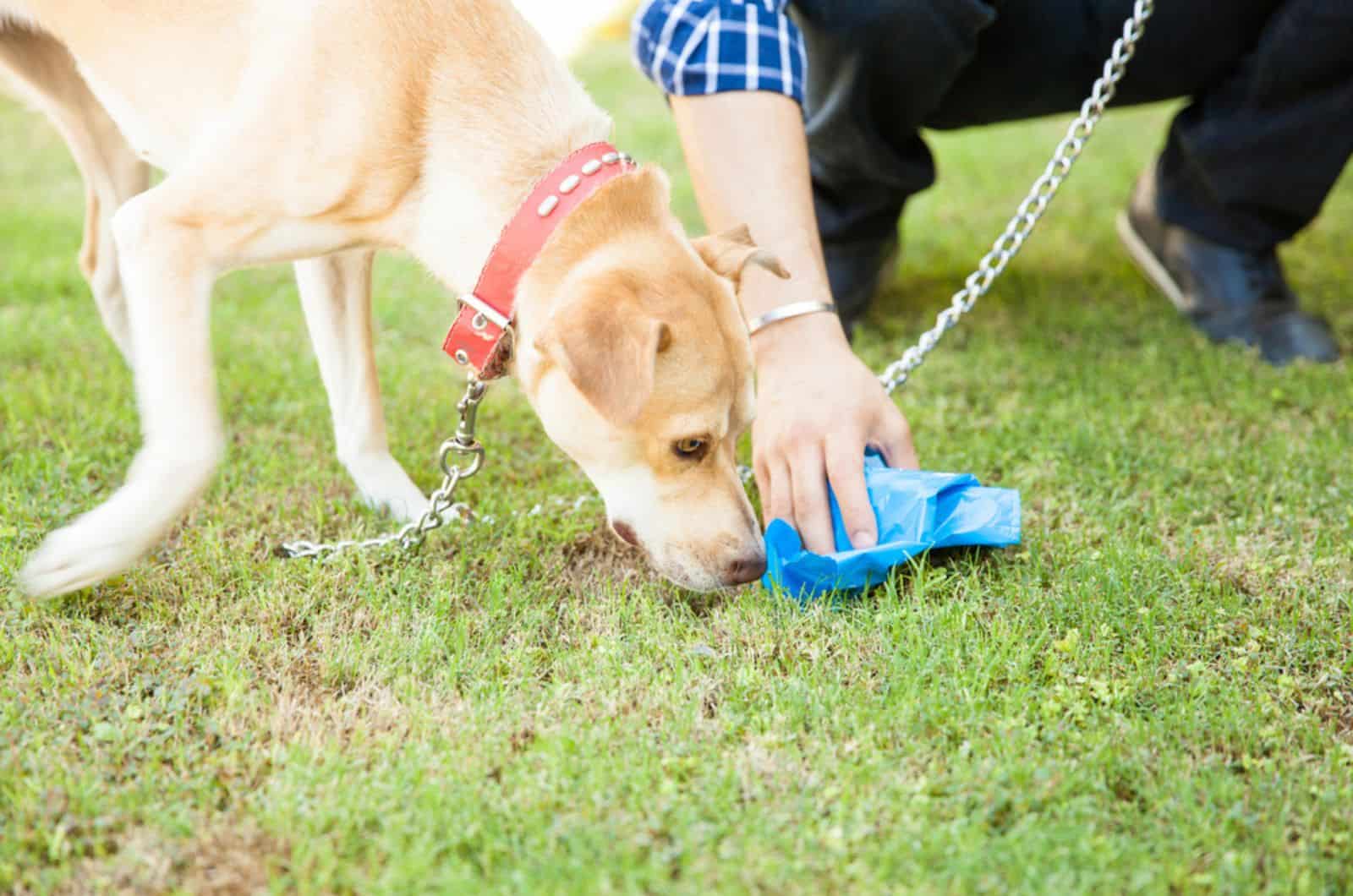
We can learn a lot about our dog’s health from their feces. A specific parvo poop smell is likely to be one of the first symptoms you will notice in your sick dog. This smell combined with bloody diarrhea almost certainly means your pooch has parvo.
You will want to find a way to get rid of that horrible smell badly, but the truth is cruel – the parvo poop smell will go away only when your dog will be completely healed from this contagion.
5. Loss Of Appetite
Your dog probably loves to eat, and you would even like him to eat less sometimes! However, if a dog eats well, this usually means he is healthy, and there is nothing wrong with his health.
When a dog refuses to eat – this is a moment to get worried. Loss of appetite might also be one of the parvo symptoms. Even if you offer your dog his favorite treats, he is likely to refuse it.
In this case, you should not press your dog to eat, but rather pay attention to whether there are other symptoms that could confirm your dog is struggling with parvo virus.
6. Abdominal Pain
Together with diarrhea and vomiting, a dog with parvo virus might also experience severe abdominal pain.
The dog is likely to lay down and won’t let you touch his abdomen. This can be very painful and frightening for dogs, so, you must approach the dog gently, and try to comfort it.
Trauma or some health issue might cause abdominal pain in a dog, but this could also be one of the first symptoms of parvo virus in a dog.
7. Depression
You are used to your dog always being cheerful and ready for action, but something seems to have changed recently. Your happy dog suddenly started looking sad and passive, and this is really starting to worry you.
Depression is one of the symptoms of canine parvovirus. How can you tell your dog is depressed? He will probably want to be alone all the time, won’t have energy to play with his family members, and won’t even be interested in taking a walk.
Many things can cause depression in dogs, such as separation from its owners, some change in their routine, loss of a family member, or some health issue – like parvo virus.
8. Lethargy
A lethargic dog is a listless dog that suddenly has no energy for any activity and is not interested in food, play, or socialization at all. Lethargy in dogs is a state of lack of enthusiasm where a dog usually ignores its family members.
Every dog can be lethargic and have a bad day from time to time. However, if you are sure that your dog is comfortable and has everything he needs, it is possible that the lethargy indicates an infectious disease such as parvovirus.
Canine Parvovirus Development
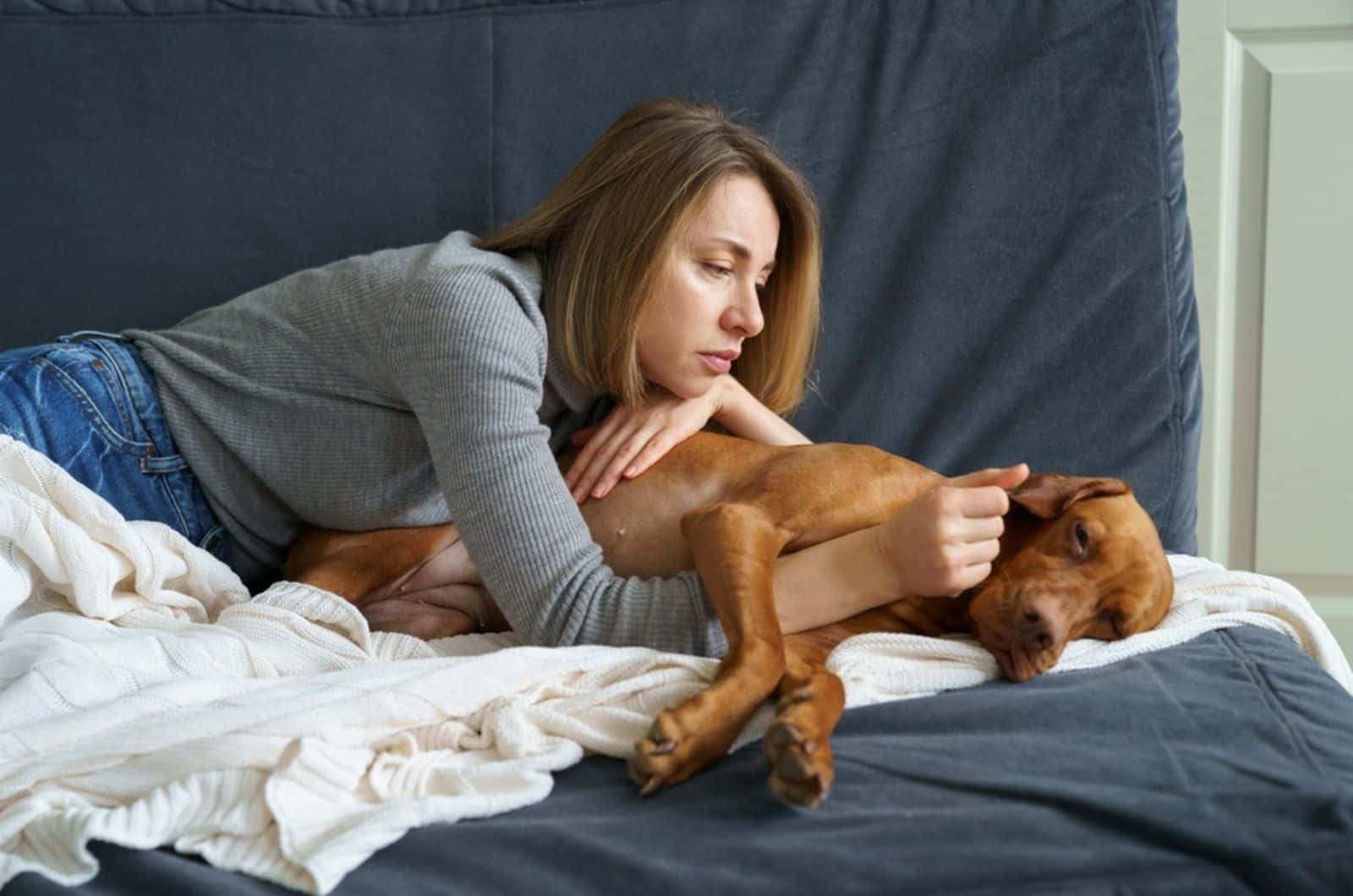
When the parvo virus enters the dog’s body, it multiplies in the lymph tissue and lymph nodes. After 24 hours, the virus enters the bloodstream and attacks the dog’s bone marrow and intestinal crypts.
The virus has an immunosuppressive effect on the epithelial cells of the dog’s intestinal crypts, where it begins to replicate.
As early as the third day after entering the dog’s body, the parvo virus is excreted in the feces. The largest amount of virus is excreted during the period when the dog already shows all the symptoms of the parvo virus.
After about 14 days of infection, the virus is usually no longer present in the dog’s excrement.
Parvo virus can cause the appearance of secondary bacterial infections in dogs, and in very young puppies it can also cause myocarditis, which unfortunately can also result in the puppy’s death.
Canine Parvovirus Transmission
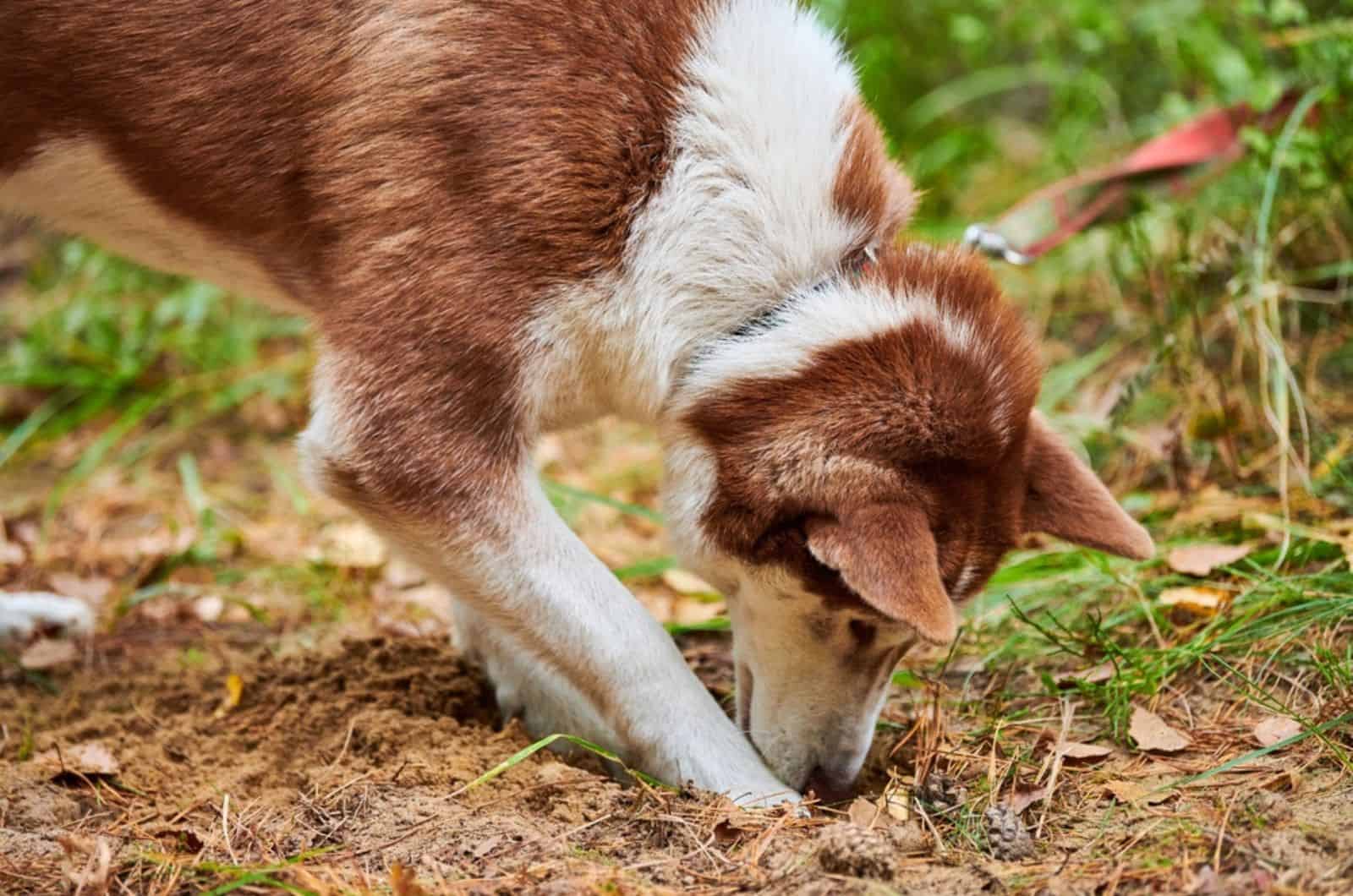
A dog can be infected with parvovirus directly or indirectly. Indirect transmission of the virus is through contact with the feces of an infected animal, or through contact with the remains of the virus on shoes, clothes, toys, or other objects.
The dog’s environment is important for the development of a parvovirus infection – that is, things and animals with which your dog is in contact. Immunity and vaccinations are also essential here.
Finally, it is important how strong the virus is, and how much virus the dog was in contact with.
Therefore, the parvo virus will not affect every dog equally; while some dogs will experience severe consequences of infection with this virus, the virus will not be transmitted to other dogs at all.
Generally speaking, dogs younger than 4 months are most susceptible to parvovirus infection. Adult dogs that are infected with parvovirus will in many cases do much better than younger dogs that have an underdeveloped immune system.
Canine parvovirus will be transmitted much more easily to dogs that live in poor sanitary conditions, which makes them much more prone to infection of all kinds of viruses and bacteria.
How Can I Treat Parvo At Home In My Dog?
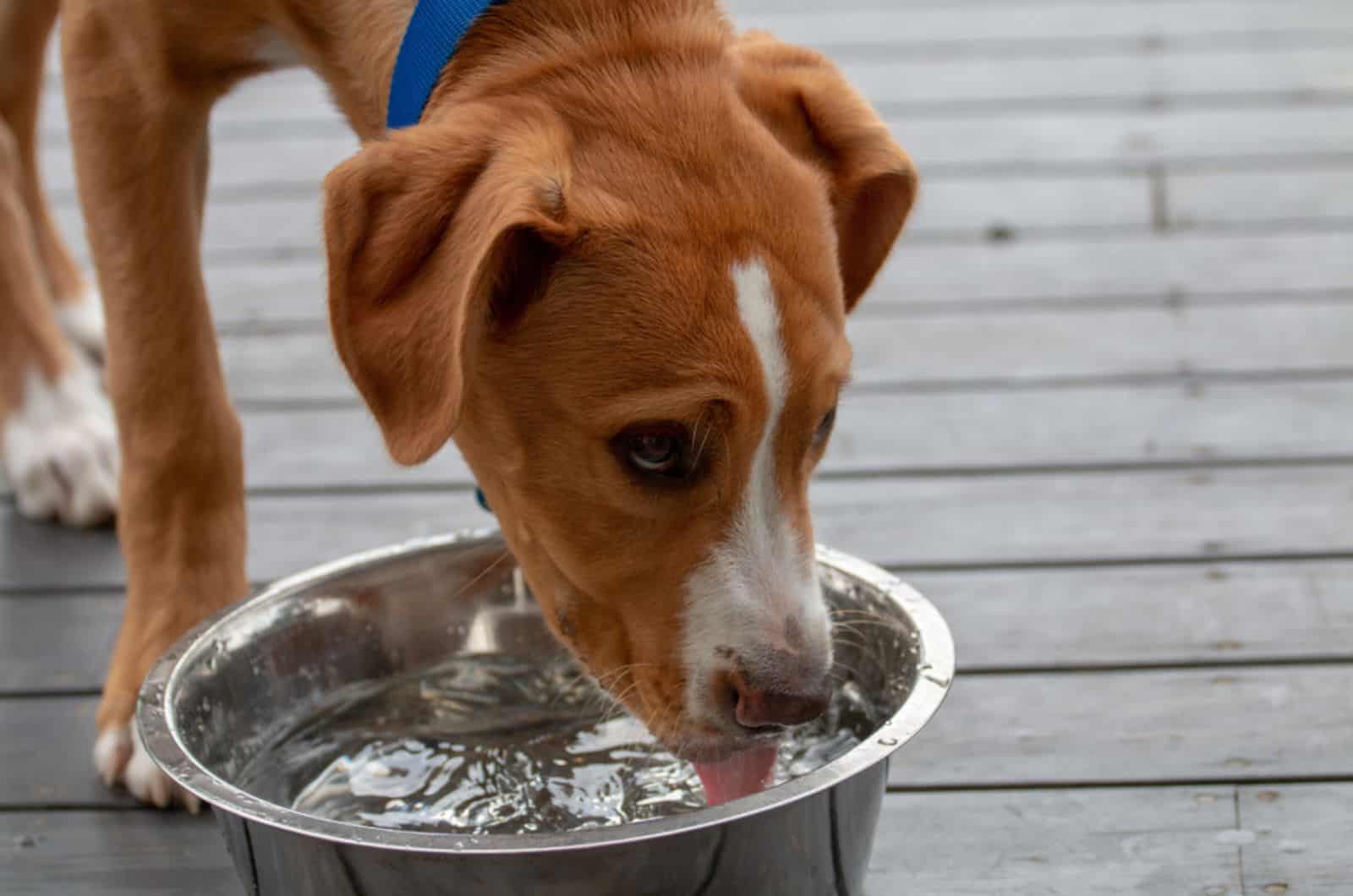
Incubation of parvovirus in dogs is 3 to 8 days. Some dogs have this virus without any symptoms.
The clinical picture of the disease in each dog will depend on several factors, such as the amount of virus introduced into the body, the dog’s age, the development of secondary infections, etc.
In some dogs, the virus will manifest only with mild diarrhea, while in some others, this virus may even have a fatal outcome.
Very young puppies, between the ages of 4 and 8 weeks, which become infected with the parvo virus might experience changes in the heart muscle, which can result in death within 24 hours.
So, the parvo virus can be dangerous for a dog’s life, therefore, it is essential that all dog owners are familiar with the basic ways to help their pets and how to cure parvo in a dog without a veterinarian.
Here we want to emphasize that we still advise all pet owners first to visit the vet clinic and to ensure that the puppy is not suffering from a parvovirus infection that might be fatal for him.
If the vet gives you a green light for treating parvo at home, only then you should start with the home remedies for this disease.
1. Keeping Dog Hydrated
Outpatient parvo treatment will only be successful if a dog owner is entirely introduced to all steps of this treatment.
The first and most important thing with canine parvovirus is to compensate the dog for lost fluid and electrolytes as soon as possible.
On the first day, the puppy will probably be too exhausted to drink fluids on its own, so it will be necessary to give it subcutaneous fluids, or IV fluids and electrolytes.
If the dog is slightly dehydrated, it is necessary to give it oral rehydration, but, in some more severe cases, dogs can be severely dehydrated and constantly vomit, and then they will need intravenous fluids replacement.
Along with fluid replacement, dogs need to be given vitamin B complex.
The first 3 days are crucial with parvo virus; if the dog survives two to three days from the start of infection, there is a good chance that it will fully recover.
When you undertake parvo treatment at home without a veterinarian, it is very important that you observe the dog day and night, and watch how it reacts to the treatment.
If you have any doubts, you should call the vet and check how often and how you should give your dog fluids.
2. Feeding A Dog Easily Digestible Food
The first day after infection with the parvo virus, the dog should not consume any food. When you notice that your dog has stopped vomiting and has gained at least some energy, you should offer him wet food to see if he is willing to eat.
To begin with, offer him only a little food so as not to cause the dog to vomit again. In the recovery period a dog should eat easily digestible food, such as white rice and baby food.
Parvo virus can seriously damage a dog’s digestive system, so a dog should not eat any raw food for a couple of weeks or even longer, if the vet suggests so.
You can find a lot of useful advice in our article on what to feed a sick dog with no appetite, but still, you should not decide on any of these meals without consulting a veterinarian first.
3. Anti-diarrheal Medications
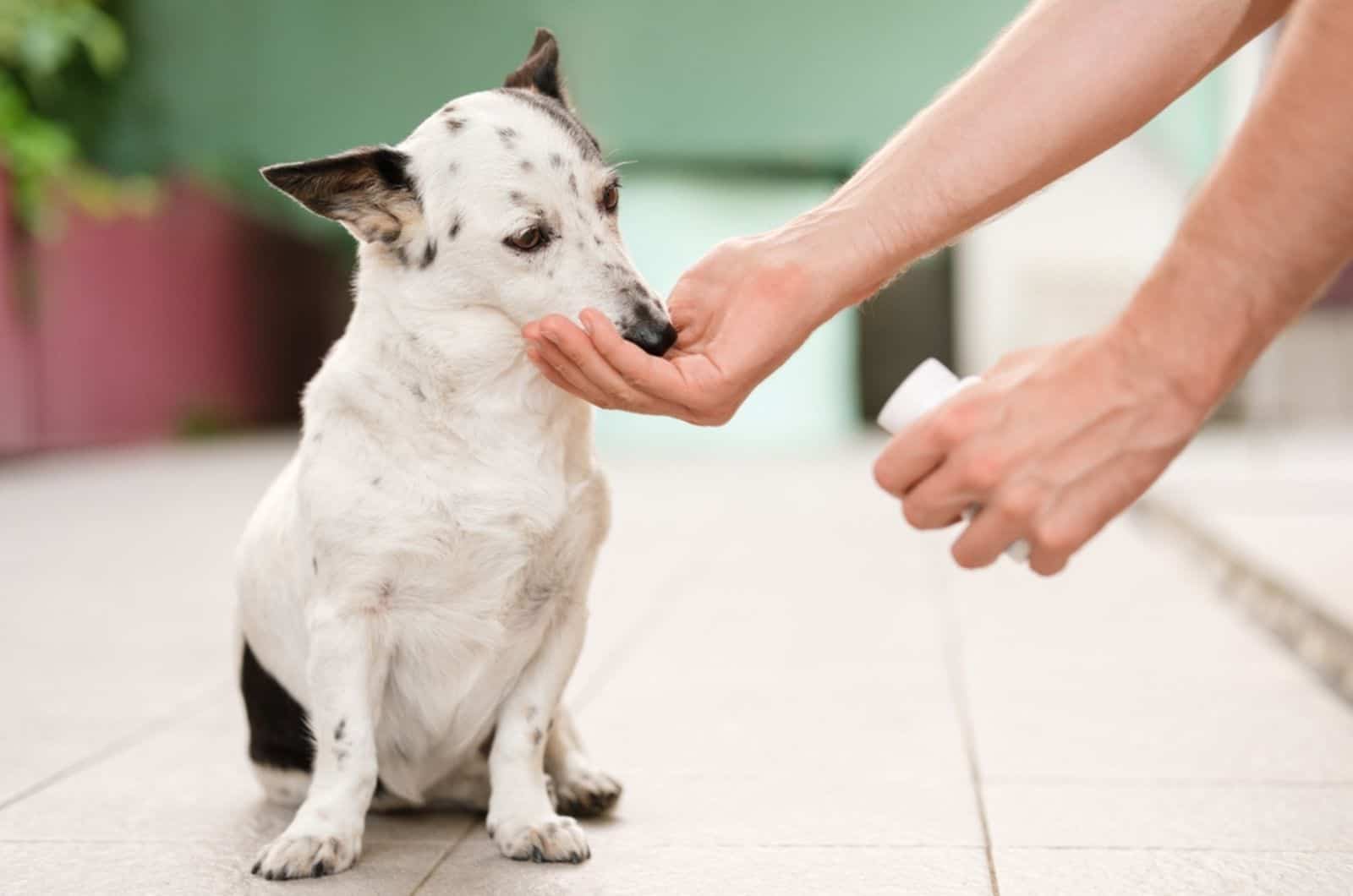
Diarrhea is one of the most common parvo symptoms in both adult dogs and in young puppies. So, it is almost certain that a dog suffering from parvo will need anti-diarrheal medications.
You might have thought of ways how to clean diarrhea out of carpet before, but with a dog having parvo virus, you must be aware how dangerous this can be for dog health. Dog having diarrhea for a couple of days will greatly exhaust him and impair his immunity.
For this reason, it is very likely that you will need to give your pet anti-diarrhea medication, which you will need to consult with your veterinarian about. You should not decide on your own to give your dog these types of medications.
4. Anti-nausea Medications
When your dog starts recovering from parvo virus, it will gain his appetite back and will want to eat food. But, even when your dog starts eating again, it is likely that it will vomit all the food it eats.
This is why you will probably also need to give your dog anti-nausea medications. Just like with the anti-diarrheal medications, you should also ask a vet for medical advice with the anti-vomit medications.
Also, a vet might suggest giving your dog some probiotics to help his digestive system get balanced as soon as possible.
5. Keep Your Dog Isolated
A dog suffering from parvovirus should be isolated in a separate room; this is especially important if you have other pets. Also, when the dog is isolated you eliminate the possibility of him spreading the virus to other dogs.
Since a dog with parvo virus might lose white blood cells, and will have a weakened immune system, it might be prone to bacterial infections. This is why it is also essential for a dog to be isolated until it fully recovers.
You should keep your dog in a place where he feels safe and comfortable, and try to comfort and pet him, so that he knows it will all pass, and he will get well soon.
6. Remember Disinfection
With parvovirus, it is extremely important to take care of cleanliness and disinfection; even the smallest piece of fecal matter from an infected dog can be fatal for a healthy dog.
Owners of infected dogs should show responsibility and thoroughly clean every area where their dog has been. Cleaning should be done using bleach, and the dog owner should also wear gloves and shoe covers when visiting the dog to prevent the spread of infection.
After you clean all the dog’s belongings and all the places your dog has been recently, you should also disinfect it. Do not forget that the parvo virus is highly stable, and can survive for up to several months.
How Long Does Parvovirus Treatment Last?

Treatment of parvovirus in dogs usually lasts about 10 days. After the first 4 days of infection have passed, it is almost certain that the dog will fully recover.
Of course, this applies to situations when the dog’s owner continues with appropriate treatment, and the process will significantly depend on the dog’s general health.
After the parvo virus treatment is over, the dog owner should still take care of the dog’s condition, monitor it, and make sure that the dog continues to eat light food and that it does not indulge in more physical activity for some time.
How Will I Know My Dog Is Recovering From Parvo?
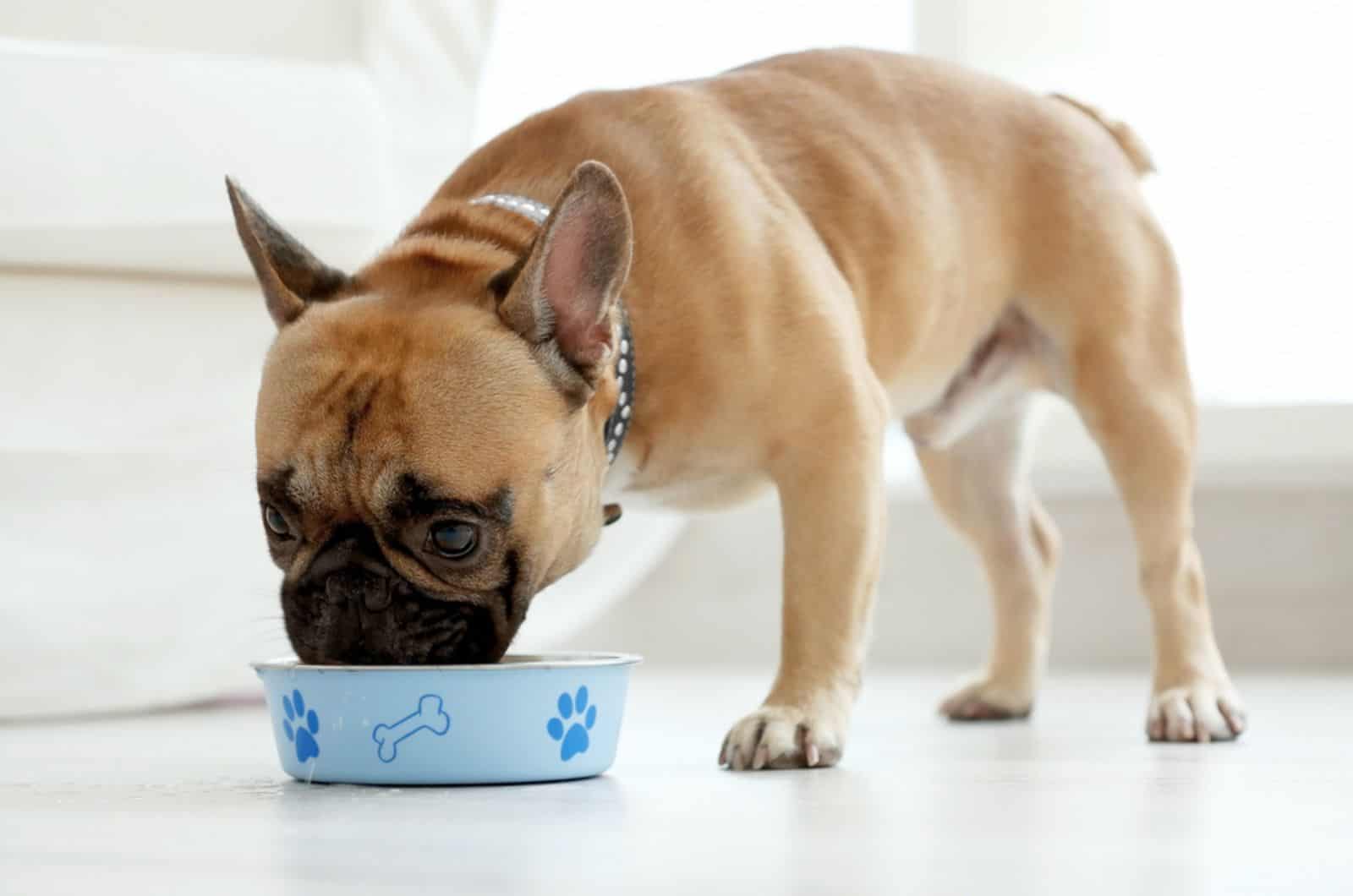
All you want to see is your dog recovered from parvo, but you might be unsure what are the right signs that show your furry friend is doing better.
First of all, your puppy will want to eat; and after it eats, it won’t vomit the food it just ate.
This means that the dog’s digestive system is going back to normal and that soon your dog will be fully recovered.
Also, you will notice your dog has more energy, and is up for some interaction with you. A dog with parvovirus will likely just want to be alone and won’t be happy as usual to see you.
In the first weeks after a dog recovers from parvo virus, even if he shows he wants to play with you or run, you should take it slowly and ensure your dog gets enough rest. Parvovirus is a severe disease and it takes some time for a dog’s body to fully recover.
Furthermore, when your dog starts recovering from parvo, you will notice his poop does not smell so bad anymore. Your dog’s feces will not be bloody anymore, and will start to have the normal color and normal form.
If you are unsure what a normal dog poop should look like, find your answer in our article on dog poop color chart.
How To Prevent Parvo In Dogs?

Parvo virus can be a threatening disease for dogs, especially for younger dogs, and this is why all dog owners would of course want to know if there is a way to prevent parvo, rather to know how to deal with this disease.
Let’s look at what are the ways to prevent parvo in dogs.
Vaccination
Vaccination is the best way to prevent your dog suffering from parvo virus. If you have purchased a puppy from a professional breeder, the puppy is likely to have received first shots of vaccinations.
Puppies should receive their first when they are 6 to 8 weeks of age, and after that, they should receive 2 revaccinations with an interval of one month.
After that, every dog should receive a revaccination against the parvo virus once a year.
When you welcome a new puppy, you will be the one responsible for all the further vaccines. Also, beware that, if your puppy came from an animal shelter, he has probably not received any of the vaccines.
Paying Attention To Dog Licking Other Dogs’ Feces
You have probably witnessed at least once your dog licking other dog’s pee, or even worse – feces, and you could not figure it out why would your dog do something like this. Well, there are certain behaviors that will always be weird to us, but would seem perfectly normal to our furry friends.
While you are training your young puppy, you need to make it clear to him that he should not do this. Licking other dogs’ feces is one of the most common ways for a dog to catch parvo.
You certainly don’t like it when you see a dog’s feces on a street while walking. Well, we want to remind all dog owners to always clean after their dogs – if every dog owner acts responsibly, there is a significantly lower chance that dogs will transfer parvo virus to each other.
All pet owners know how dogs can get stubborn, and it sometimes feels almost impossible to control them during the walk. However, adequate dog training and socialization from a young age are essential when owning a dog.
This way, a dog will learn to distinguish good behavior from bad behavior. Not just you will be safe while walking with your dog – you will at the same time be taking care of your pet’s health, and other dogs’ well being.
Dog’s Belongings Hygiene
Keeping dog’s belongings clean should be equally essential for pet parents as keeping their stuff clean is for them.
So, remember to clean dog’s beddings, food and water bowls, and toys. Also, try to ensure your dog doesn’t share his food and water bowls with other dogs, since this can also be a way for a dog to catch parvo virus.
Adequate hygiene can greatly reduce the appearance of all kinds of viruses and bacteria in your pet.
Can A Puppy Survive Parvo Without Going To The Vet?
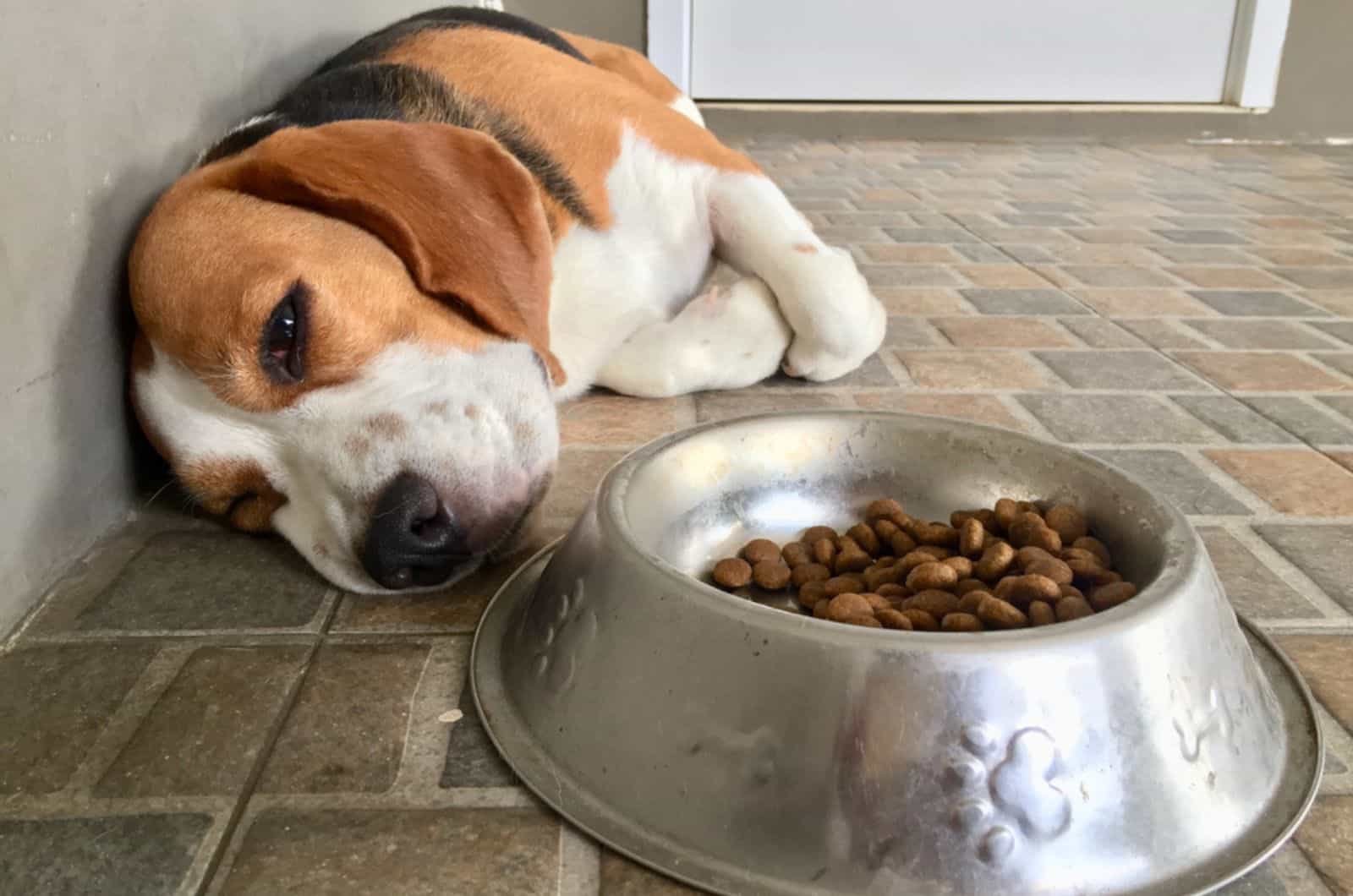
Dogs with a parvovirus treated in a vet clinic have a high survival rate – 85-90%. But, treating parvovirus in dogs can get very expensive; medical expenses can get as high as $2000.
If a dog gets this disease, all the dog owner wants to know is whether his puppy will survive parvo. Also, all dog owners would certainly want to know whether their puppies will survive parvo without going to the vet.
The bad news is that treating parvo in dogs at home has a lower success rate than treating parvo in vet clinics, but the good news is that there is a seriously good chance your dog will fully recover from parvo if you strictly follow all the steps in the recovery process.
Also, the essential part of the dog’s recovery is discovering the dog is suffering from parvo at the beginning.
Unfortunately, the mortality rate of untreated parvo virus in dogs is pretty high. So, as soon as you notice a couple of symptoms that could indicate parvo virus in your dog, you should consult a vet and start with the home treatment right away.
How Does Parvo Affect Humans?
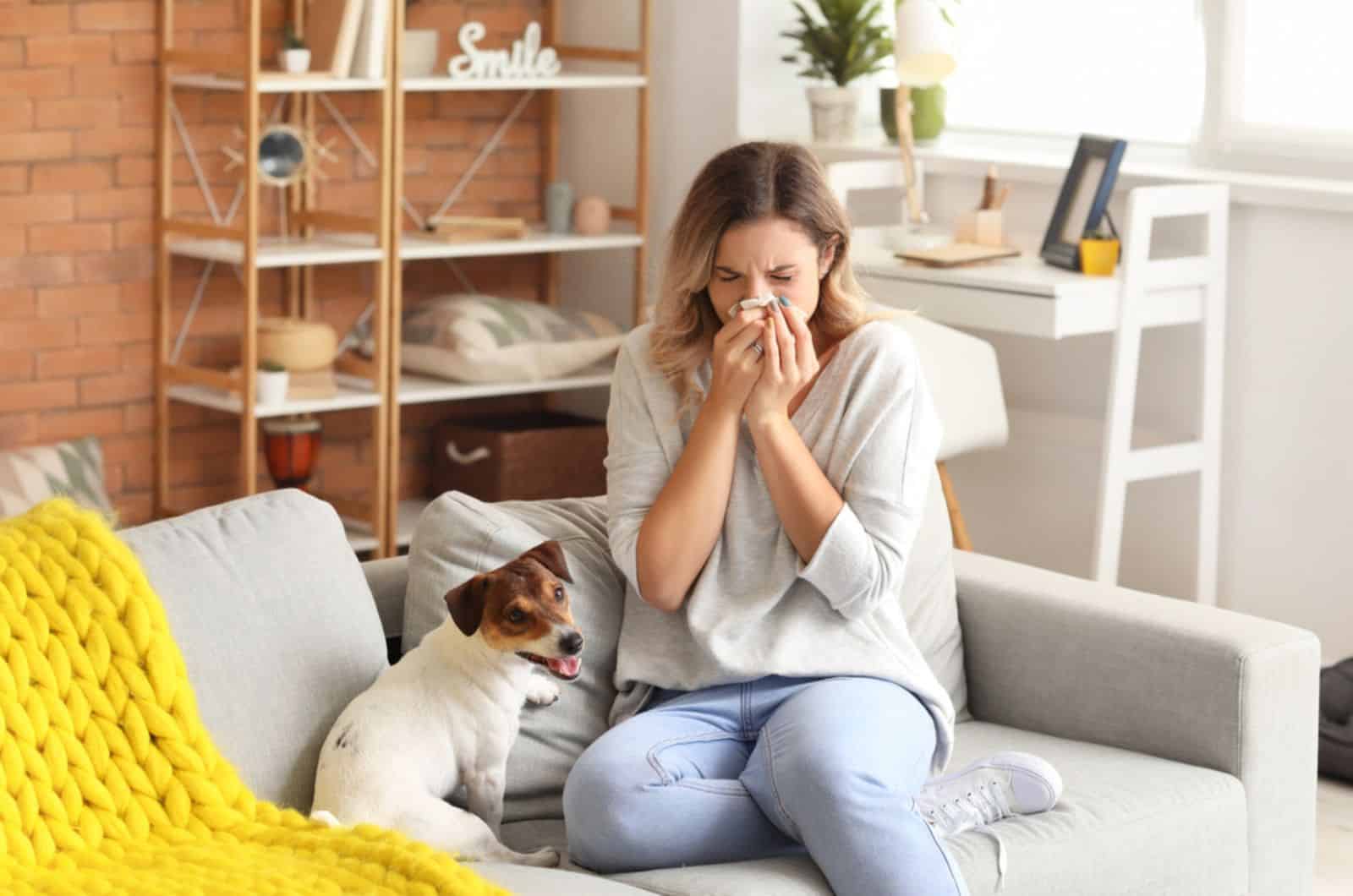
As we have seen, if the parvo virus is not treated on time, it can be fatal for dogs. This can lead many people to wonder whether humans also can suffer from this virus.
People can be infected with parvo virus, but this is not the same type as the canine parvovirus – so, the canine parvovirus is limited to animals, while there is another type of parvo virus that affects humans. Therefore, dogs cannot transfer parvovirus to humans.
Parvo virus most commonly affects children, and some of this virus common symptoms are rash, muscle pain, fever, and a stuffy nose. This human virus is transmitted through saliva or skin, or blood contact. Also, humans can transfer this virus to each other by sharing the same objects.
There is still no parvovirus vaccine for humans. Pregnant women and people with a certain health diagnosis are in danger of developing additional complications.
Conclusion
Your dog having a virus like parvo sounds pretty terrifying. Unfortunately, this virus can even be fatal for dogs, especially when it is not treated on time in the right way.
Fortunately, there are vaccines that prevent this virus, and, also, there are ways how to cure parvo without a vet. None of us want to see our dogs suffering from such disease, but still, it is recommended for all pet parents to be prepared if a situation like this occurs.
Every pet parent will feel safer with a vet taking care of their dog, but the truth is the costs of parvo treatment with a veterinarian can get pretty high. This is why it is excellent for a dog owner to educate themselves how to treat parvo at home.
At the end, we want to mention once more that it is essential for dog owners to still consult a vet before they give any kind of medications or food to a dog with parvo.
Also, if you notice your dog is not getting any better, do not continue with parvo treatment at home – contact a vet immediately!
Check Also:
• Dog Spay Incision Lump: Cause For Concern?
• Hunched Back In Dogs: 11 Possible Reasons













